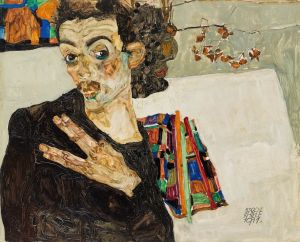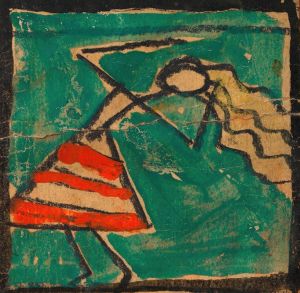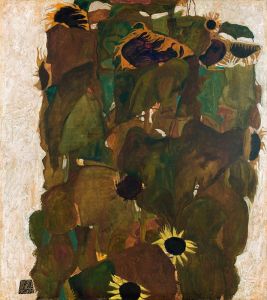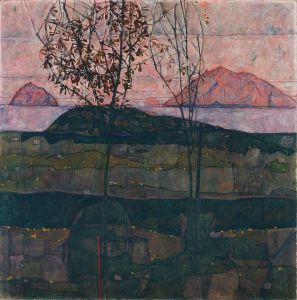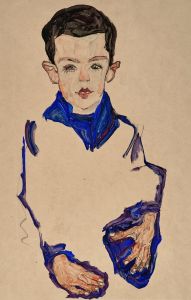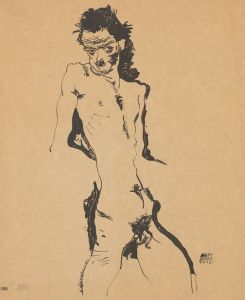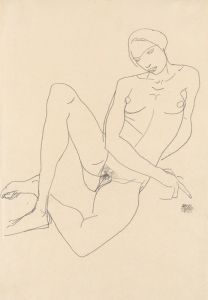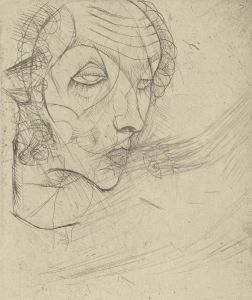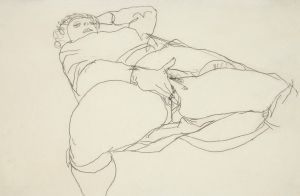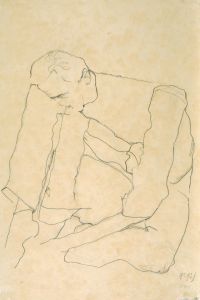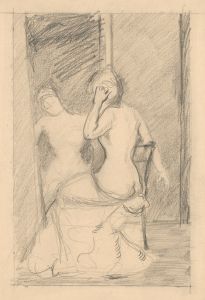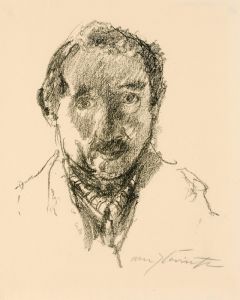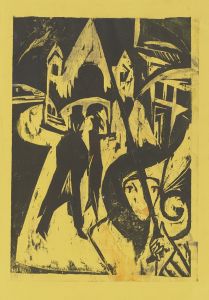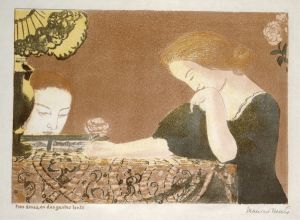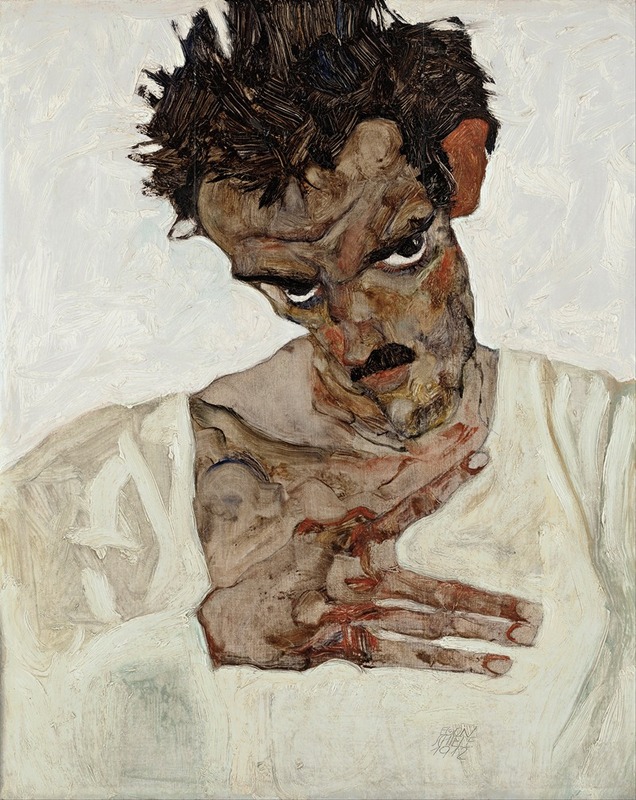
Self-Portrait With Lowered Head
A hand-painted replica of Egon Schiele’s masterpiece Self-Portrait With Lowered Head, meticulously crafted by professional artists to capture the true essence of the original. Each piece is created with museum-quality canvas and rare mineral pigments, carefully painted by experienced artists with delicate brushstrokes and rich, layered colors to perfectly recreate the texture of the original artwork. Unlike machine-printed reproductions, this hand-painted version brings the painting to life, infused with the artist’s emotions and skill in every stroke. Whether for personal collection or home decoration, it instantly elevates the artistic atmosphere of any space.
Egon Schiele, an Austrian painter known for his intense and often provocative works, created "Self-Portrait with Lowered Head" in 1912. This painting is a significant example of Schiele's exploration of self-identity and emotional expression through art. Schiele was a leading figure in early 20th-century Austrian Expressionism, and his work is characterized by its raw emotional intensity and innovative use of form and color.
"Self-Portrait with Lowered Head" is a striking example of Schiele's self-portraiture, a genre he frequently explored throughout his career. In this painting, Schiele presents himself with a lowered head, a pose that conveys introspection and vulnerability. The composition is marked by its stark, almost skeletal depiction of the artist, emphasizing his angular features and the tension in his posture. This portrayal reflects Schiele's interest in the human form and his ability to convey complex psychological states through his art.
The painting is executed with Schiele's characteristic use of bold lines and a limited color palette, which enhances the emotional impact of the work. The background is typically sparse, drawing the viewer's attention to the figure of Schiele himself. This focus on the self is a recurring theme in Schiele's work, as he often used self-portraiture as a means of exploring his own identity and the human condition more broadly.
Schiele's approach to self-portraiture was innovative for its time. Unlike traditional self-portraits that often depicted the artist in a flattering or idealized manner, Schiele's self-portraits are unflinchingly honest and sometimes unsettling. He was not afraid to depict himself in a vulnerable or unflattering light, which was part of his broader artistic goal of exploring the depths of human emotion and experience.
The year 1912, when "Self-Portrait with Lowered Head" was created, was a pivotal time in Schiele's career. By this time, he had already established himself as a prominent figure in the Viennese art scene, having been influenced by his mentor Gustav Klimt and the broader movements of Symbolism and Art Nouveau. However, Schiele's work was distinct in its intensity and focus on the darker aspects of the human psyche.
Schiele's art, including "Self-Portrait with Lowered Head," often faced controversy due to its explicit content and the artist's willingness to confront taboo subjects. Despite this, or perhaps because of it, his work has had a lasting impact on the art world. Schiele's exploration of the self and his innovative approach to form and composition have influenced countless artists and continue to be studied and admired today.
"Self-Portrait with Lowered Head" remains an important piece within Schiele's oeuvre, exemplifying his unique style and his commitment to exploring the complexities of human emotion and identity. The painting is a testament to Schiele's skill as an artist and his ability to convey profound psychological depth through his work.





